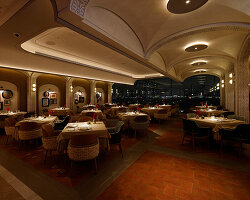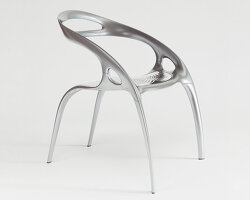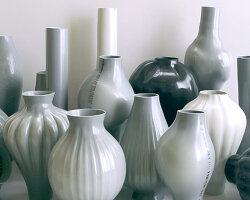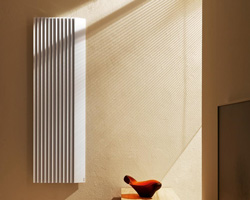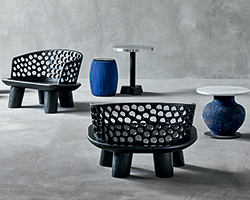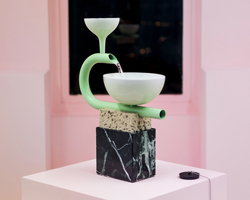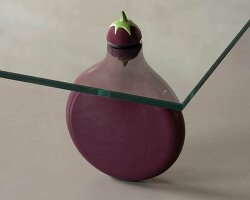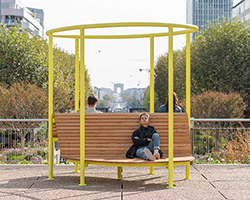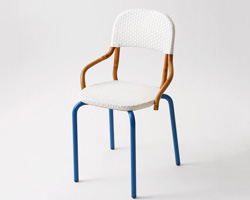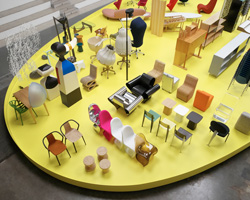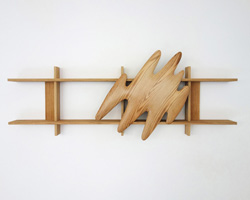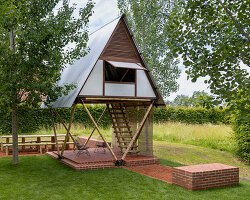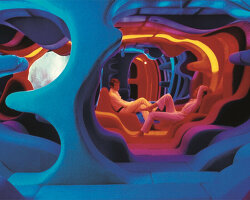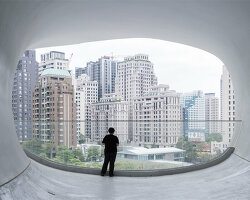the ‘typecasting. an assembly of iconic, forgotten and new VITRA characters’ exhibition immerses visitors in the history, present and future of the swiss furniture company. however, unusually, the products are categorized by human attributes, rather than their function. curated by paris-based designer robert stadler, the large installation reveals new connections, narrative threads and never-before-seen objects and design studies from the brand.
ahead of its opening at milan design week 2018 – set to be a supplement to VITRA’s stand at salone del mobile 2018 – designboom spoke with curator robert stadler about the project.
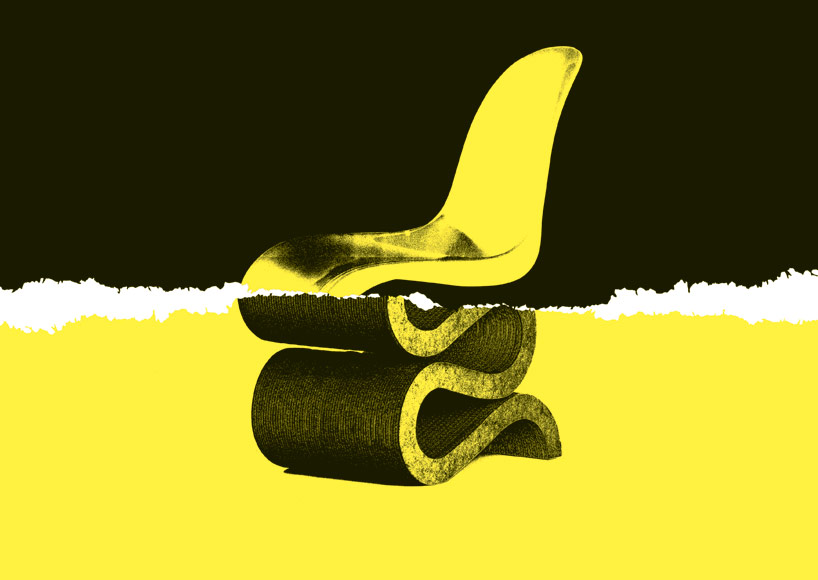
image by zak group, © VITRA
(main image: VITRA home collection in front of the VITRA schaudepot in weil am rhein, 2017)
selecting, attributing and then categorizing past, present and future VITRA furniture by their human qualities, the exhibition explores a critical assessment only typically seen in the film industry, where actors are often typecasted into a particular role repeatedly. by likening the products to their owners as such, the installation strengthens the connection between product and user, and as a result, highlights many contemporary changes in society and thus the continuous effects this has on the furniture typologies. visitors will be able to visualize the expansive display to understand and question the traits of the nine groupings.

image by zak group, © VITRA
designboom (db): what are the most important topics the exhibition aims to communicate and engage visitors with?
robert stadler (RS): usually, furniture is grouped into particular categories that are only concerned with their function and practical application. there is furniture for the home, the office, for public areas, chairs for the dining table and chairs for the office. in «typecasting», I have applied different criteria for classifying furniture. according to their formal and material qualities, I have attributed human qualities to them – such as frugality, vanity, restlessness. this view creates a new perspective on furniture design and it becomes clear that the exhibition is as much about furniture as it is about us. because: a piece of furniture speaks about its owner, it represents them. as such, it has – and always has had – a social function. through the rise of social media, this representative function has become intensified. the idea of furniture as characters mirrors our new strategies of self-staging.
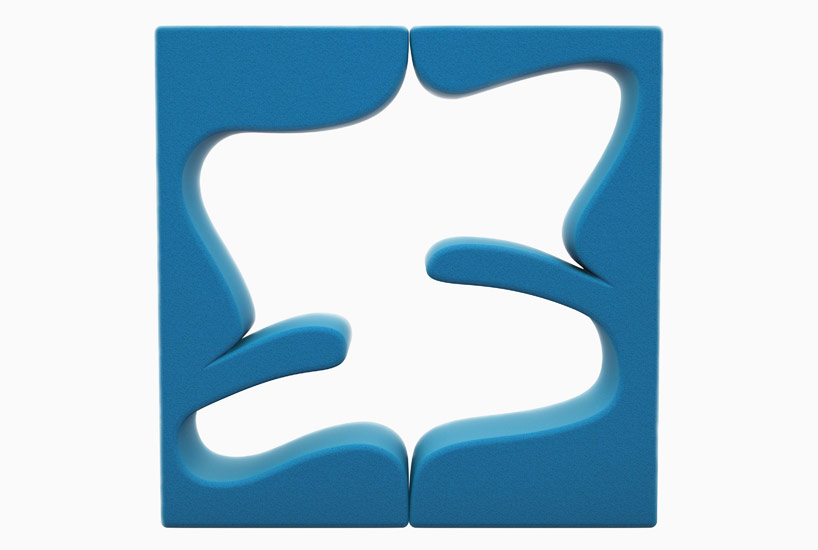
living tower by verner panton, 1969
DB: how does its title, ‘typecasting. an assembly of iconic, forgotten and new VITRA characters’, hint at what will be on show?
RS: what we see is a panorama of about 200 VITRA objects. these objects include current production models, but also objects from the collection of the VITRA design museum, prototypes, design studies and experimental objects of past VITRA projects.
the term typecasting is used in the film business – but also in theater – when an actor is repeatedly cast for similar stereotypical roles, such as the villain, the vamp, the action hero or the beauty.
in the installation typecasting I have applied this process to furniture. I have viewed the pieces as characters with a set of personality traits and – just as in the movies – cast the object for a particular role. thus, each of the pieces of furniture inside this large panorama is categorized into one of nine stereotypes, or ‘communities’.
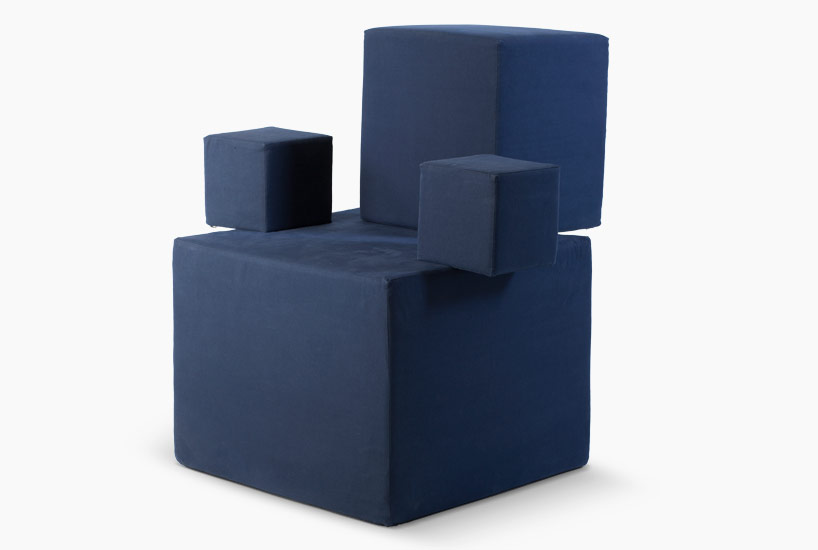
soft geometric chair by scott burton, 1980 (part of the VITRA edition of limited edition pieces)
DB: was it a challenge to find and display a balance between VITRA’s history, present and future?
RS: VITRA’s past is incredibly rich, what we see on show are, for example, some of the VITRA editions of the 1980s which many people have never seen before. but of course it is also a company which looks into the future and this is mainly expressed through some new design studies that are presented as part of the installation.
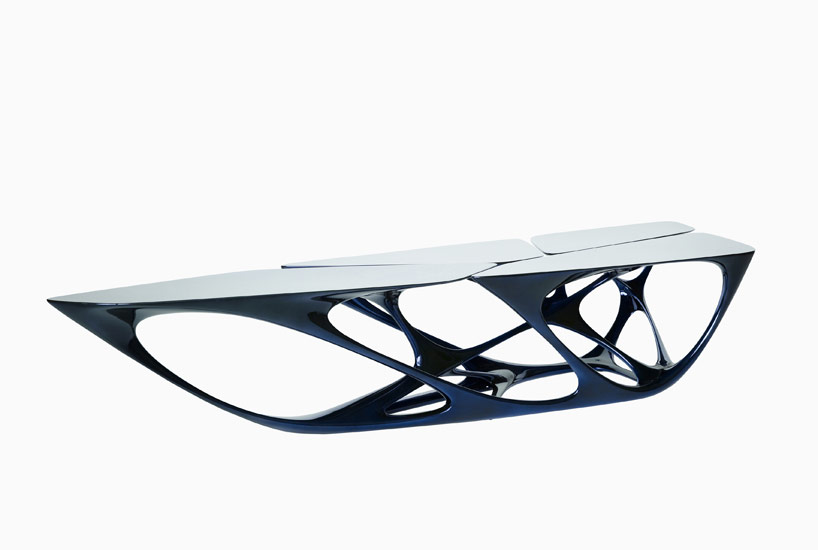
mesa table by zaha hadid, 2007 (part of the VITRA edition of limited edition pieces)
DB: why was it meaningful to present ‘forgotten’ parts of VITRA?
RS: the exhibition offers a transhistorical perspective. the earliest design in the show dates from the 1930s, the most recent are design studies that might find their way into the production cycle. the way that I have grouped and juxtaposed the pieces also illustrates how contemporary themes have often been concerns earlier in history. for instance, communal living working is a theme that is part of this installation and is definitely a current topic that is much-discussed in design, but as the installation illustrates, it is in fact a recurring theme. however, in the 1930s it was part of the reform movement, then it was taken up in the alternative and hippie movement in the 1970s, in today’s digital age it is recurring – but its motivation and material manifestation has evolved.
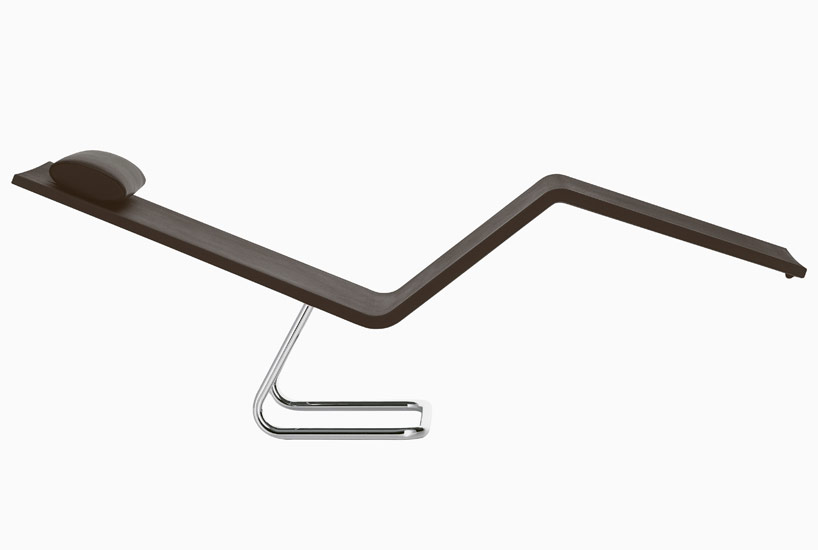
MVS chaise by maarten van severen, 2000
DB: how will visitors become immersed in the exhibition?
RS: typecasting is a multi-layered installation. the visitors are first confronted with an impressive panorama that might reveal something about the dedication VITRA applies to producing, exhibiting and collecting furniture. as they delve deeper into the installation they discover that it is concerned with playfully questioning the way we use furniture as a means of self-staging.
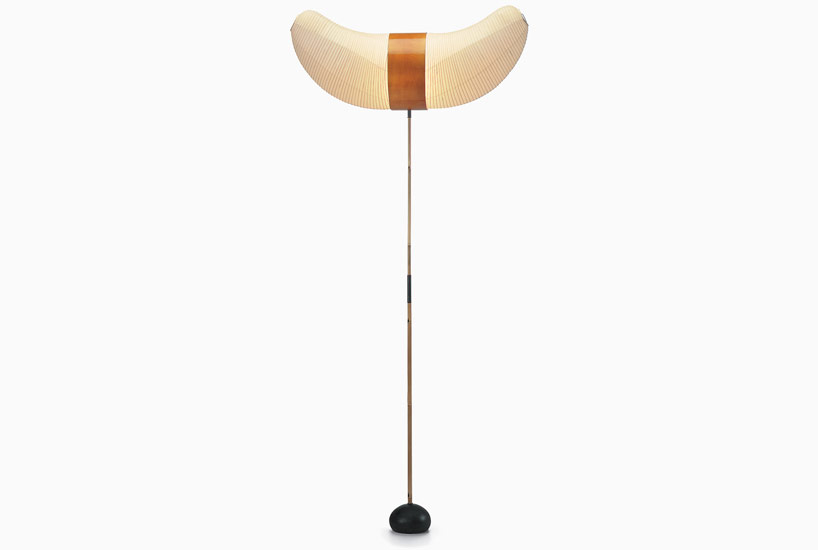
akari BB3-33S by isamu noguchi, 1951
VITRA’s ‘typecasting. an assembly of iconic, forgotten and new VITRA characters’ exhibition is open from april 17 to 22 at la pelota, via palermo 10, 20121, milan.
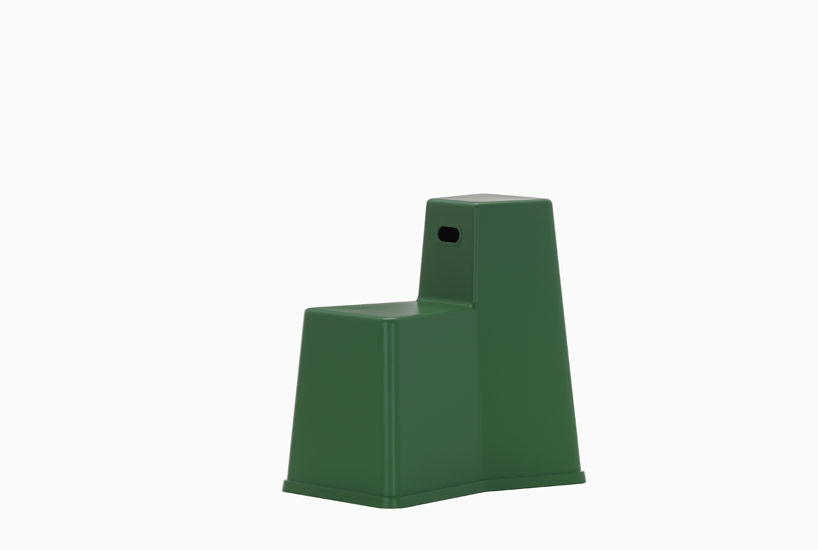
stool tool by konstantin grcic, 2016
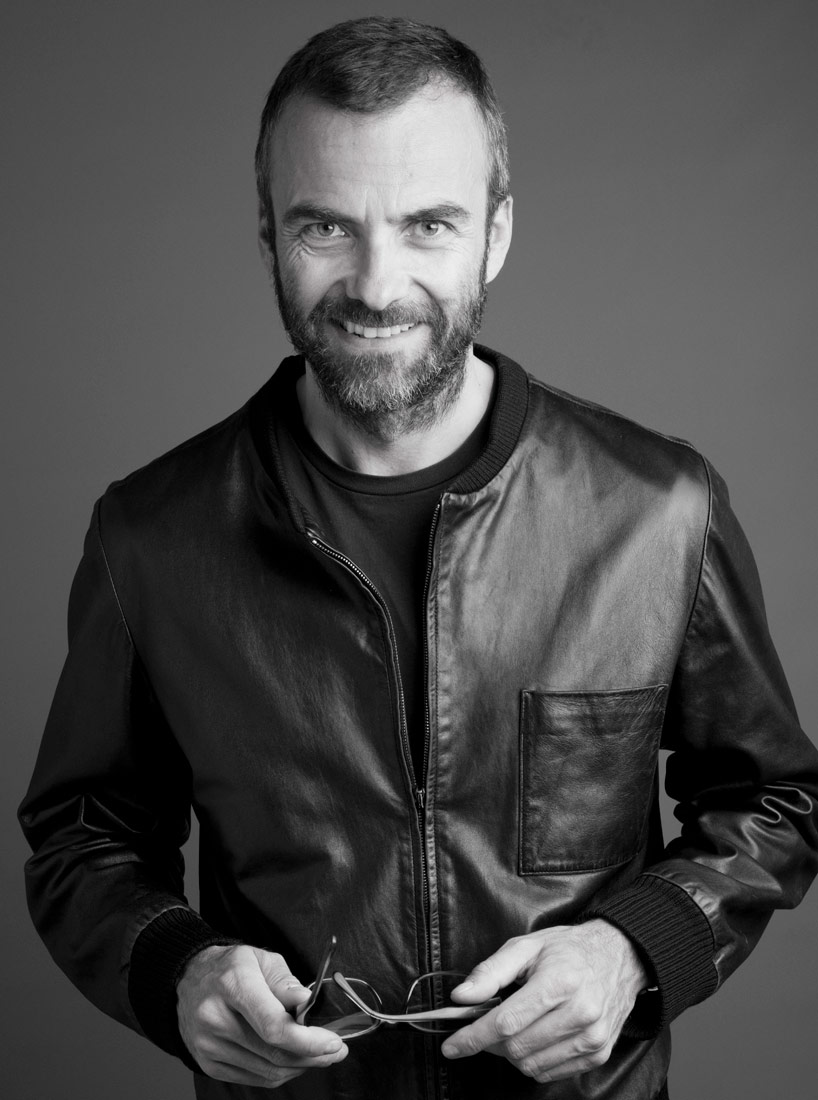
paris-based designer robert stadler curated the installation
about robert stadler:
the viennese-born curator and designer of the exhibition, robert stadler, lives and works in paris. moving freely between the realms of product design, art and art direction, he frequently switches roles as a creator of objects and as a critical observer.

